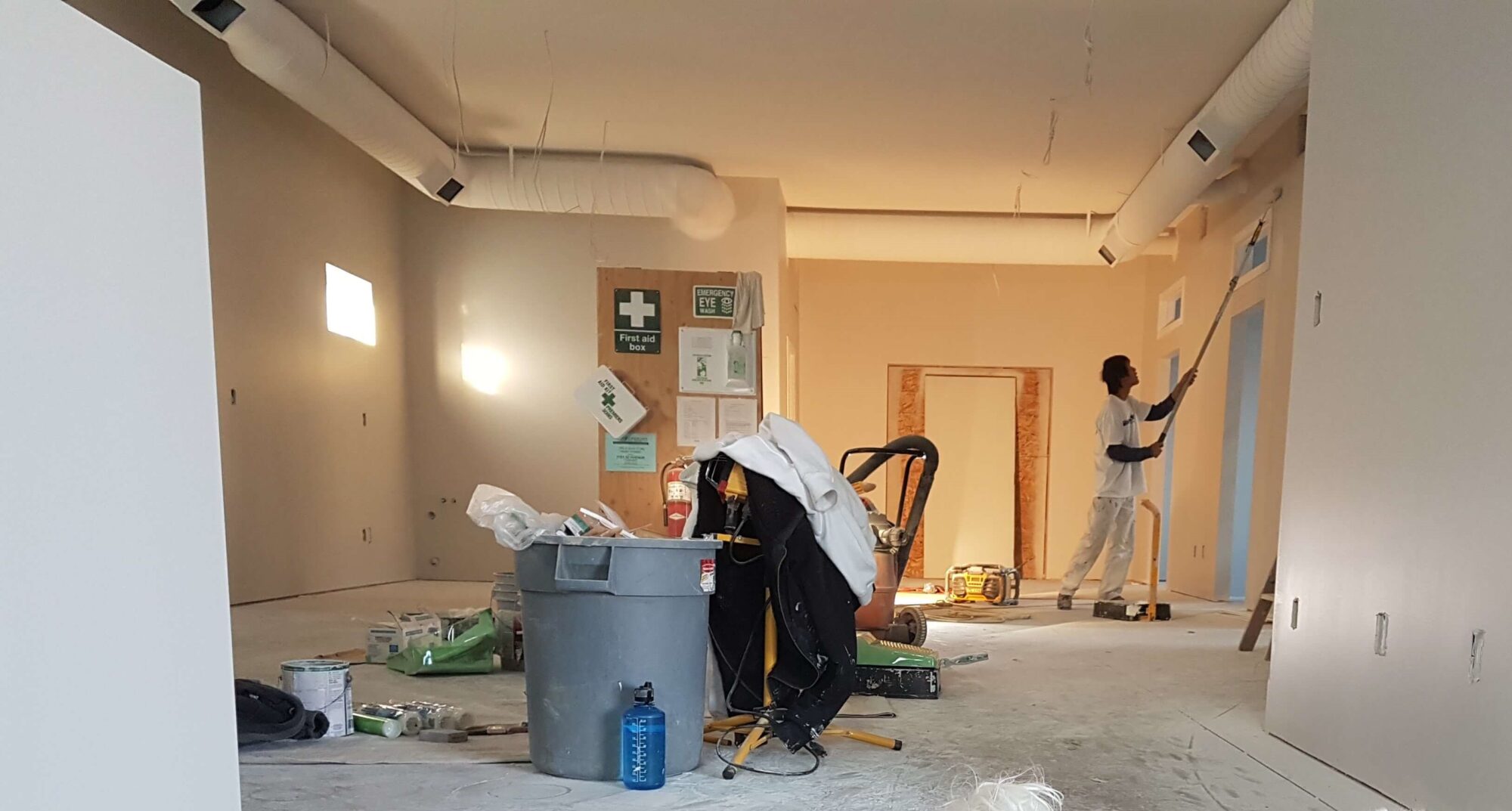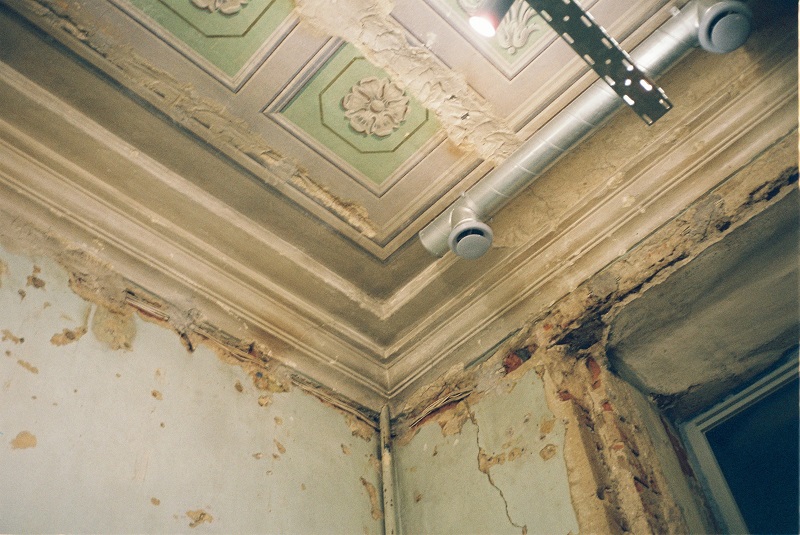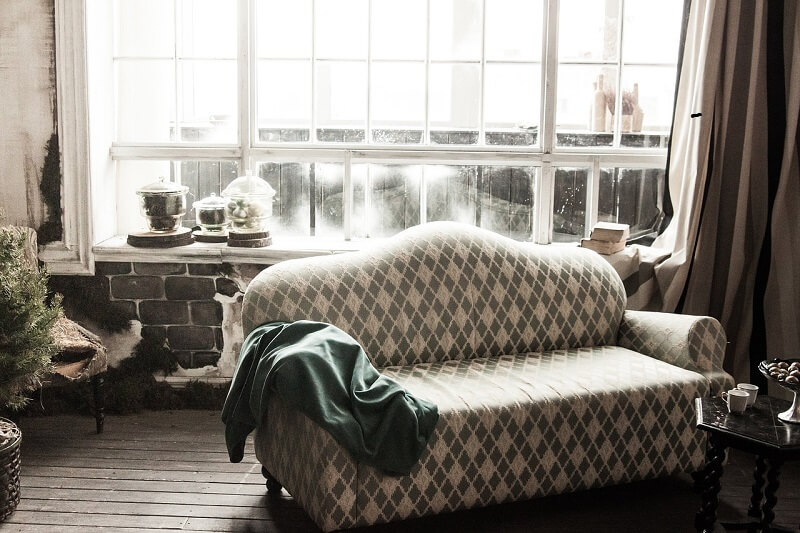It might be distressing when you find water damage on your property. If not addressed immediately, it might potentially result in serious structural damage, which is frustrating. To effectively manage and restore your property to its original condition, the water damage restoration process entails nine crucial steps.
Water Damage Restoration

Repairing and cleaning up after water damage is known as water damage restoration. Cleaning up after a flood or repairing a leaking roof are examples of water damage restoration. Whatever the extent or scale of the damage, it must be repaired as soon as possible to avoid future problems.
Causes of Water Damage
The following are some of the causes of water damage:
- Air conditioner’s condensation
- Broken appliances
- Broken sprinkler systems
- Broken sump pump
- Clogged drainage pipes and gutters
- Clogged toilet
- Damaged roof drainage
- Defective or old water heaters
- Leaking or burst pipes
- Natural calamities (like flooding, heavy rain)
- Rubber or PVC water supply pipes
- Sewer and septic tank issues
Signs of Water Damage

These are typical signs of water damage:
- Mold
- Musty or moldy odors
- Peeling paint or wallpaper
- Sagging wooden floors
- Structural problem
- Water puddles
- Water stains on the ceiling, flooring, or walls
- Warping laminate flooring
- Wet rugs or carpets
- Window condensation
Step by Step Guide to Water Damage Restoration Process

Finding water damage in your house can be stressful. It’s important to follow every step because doing so can help you get your house back to normal. If you see water damage, do the following steps:
Step 1: Find the Source
You can stop the flow of water from a broken pipe by shutting off the water supply. You can tell if the water is clean by looking at where it comes from. Even though a pipe burst under your sink isn’t ideal, at least the water is clean. Floods spurred on by a sewage backup are not considered to be the same.
Step 2: Cut Off the Power
If there is only a small quantity of water, you might not need to worry about this step, but if there is a severe flood, your electrical outlets might be submerged in water, like those in the basement. For safety, the power needs to be turned off.
Do not try to access your circuit panel in the basement to turn off the power. Call your utility company instead, and ask them to turn the power off. Call an electrician to check your wiring and any electrical items that may have been harmed in the flood to determine what is safe to use before plugging anything back in once the water has been gone and the area has started to dry off.
Step 3: Assess the Amount of the Damage
Start by carefully assessing your property and locating all wet areas. Exposure to water could be dangerous depending on its source and classification. Take pictures or videos of the damage to serve as documentation for insurance claims.
It could be just as hazardous as water from a sewage backup if you’ve spotted long-standing water in a rarely used area of your house. Water is more likely to cause damage the longer it is left unattended.
Step 4: Remove any Standing Water
Remove the water from your house as fast as you can using a wet/dry vacuum or pump. In doing so, the water is prevented from penetrating porous materials and damaging the structural foundation or stimulating the development of mold and mildew.
To avoid possible problems with water accumulation, it is essential to properly dispose of the extracted water and make sure it is not drained close to the foundation of your house.
Step 5: Dry Off the Area
Drying prevents the development of mold and mildew, as well as more damage to the foundation of your house. Use fans and dehumidifiers to remove extra moisture and open windows and doors for better air circulation. This helps in hastening the drying process. For quicker drying, take out any wet rugs, carpets, and furniture cushions. Making sure the area is completely dry reduces the possibility of subsequent damage and fosters a more favorable atmosphere for restoration efforts.
Step 6: Recycling and Disposal
Examine broken goods carefully and decide what can be saved and what needs to be thrown away. If porous materials like carpets, upholstery, and insulation have been heavily wet or contaminated with sewage or hazardous substances, they may need to be thrown away. Items that can be salvaged need to be properly cleaned, sanitized, and dried to stop mold growth. Potential health risks can be prevented by properly removing contaminated materials from the surrounding area.
Step 7: Clean and Disinfect
To get rid of bacteria, mold, and odors, clean and disinfect all damaged surfaces. Use a mild detergent or specialized cleaning chemicals to clean the walls, floors, and furniture. Before using disinfectants, don’t forget to completely dry all surfaces. By doing so, mold development is stopped and the effectiveness of the disinfectants is guaranteed.
Step 8: Repair and Replace
Repair any structural damage first, such as drywall or flooring that has to be replaced. Replace any fixtures or other things that sustained permanent damage from the water damage. Consult with professionals when doing significant repairs to make sure the job is done properly. By doing so, your property can be returned to its pre-damage condition and safe and suitable living space.
Step 9: Prevent Water Damage
Check your property frequently for any potential risks including leaks, cracks, or broken plumbing. Further water damage can be avoided with prompt action. It’s also essential to install water-detecting devices that warn you of leaks or unexpected water accumulation. If you have basements or crawl spaces, or any other locations that are susceptible to water damage, you should also think about waterproofing options. By taking preventative action against future water damage, these procedures can provide you peace of mind and minimize the overall cost of repair.
Summary
Even though water damage might be a serious problem, it can be repaired with the correct equipment and knowledge. Having knowledge of the water damage restoration process could help you in restoring your property. Keep in mind that if the water damage is severe, it is essential to contact a water damage specialist to ensure professional knowledge throughout the repair process. Restore your property to its pre-damaged condition as soon as possible.


